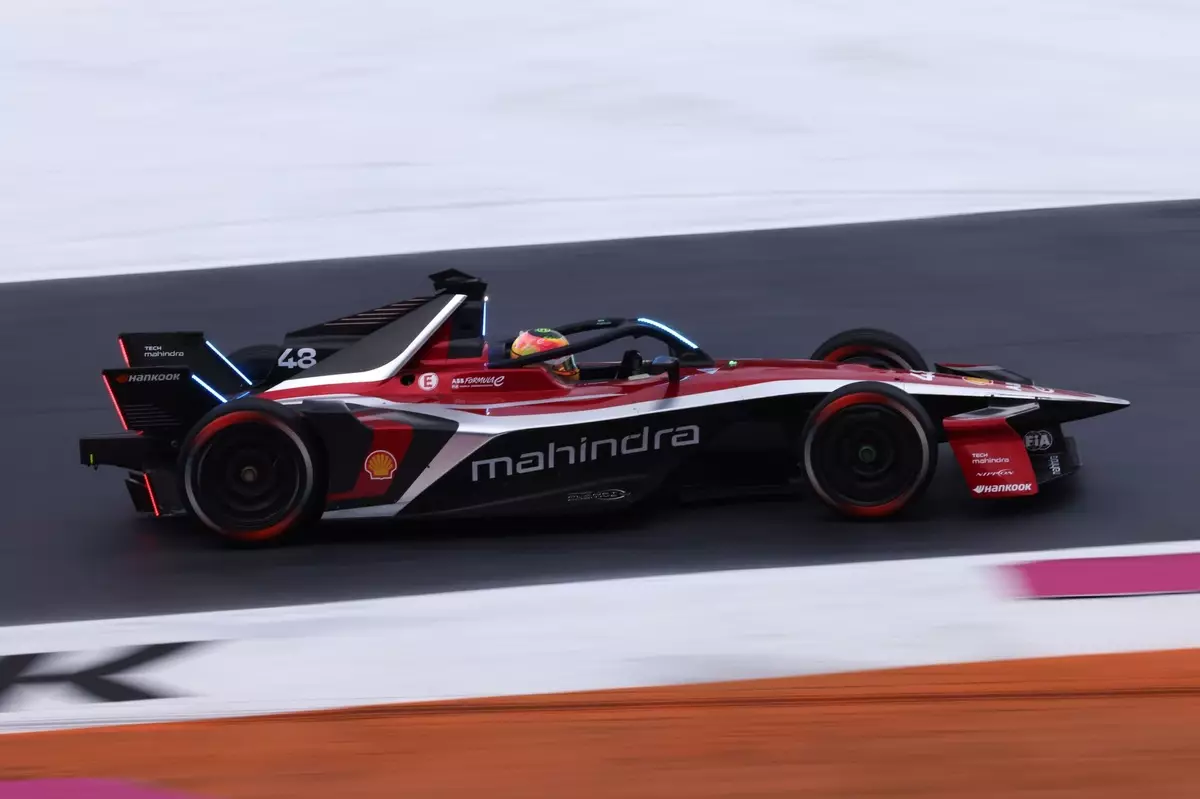Mahindra Racing, a longstanding competitor in the Formula E series, finds itself at a critical juncture as it weighs its options for the future. With the upcoming transition to Gen4 regulations set for the 2026-27 season, the team’s principal, Fred Bertrand, emphasizes their dedication to the electric racing championship. However, this assertion of commitment comes amid a backdrop of uncertainty regarding whether Mahindra will continue as a manufacturer or pivot to operating as a customer team. Since its inception in 2014, Mahindra has established itself as a key player, securing five victories and achieving a commendable third place in the overall teams’ standings during the 2015-16 season. As the championship evolves, the decisions being contemplated will not only dictate Mahindra’s role but may also channel the direction of its investment in the rapidly advancing field of electric vehicle technology.
Competition among manufacturers within Formula E is intensifying, particularly as other brands including Nissan, Jaguar, Porsche, Maserati, and Lola make clear commitments to the new Gen4 specifications. These brands are vying not merely for podium finishes but also for the opportunity to shape the future of electric motorsport by participating in pioneering technologies. In this context, the necessity for Mahindra to formulate a decisive strategy becomes increasingly apparent. Bertrand’s remarks indicate that the team’s ambition remains geared towards maintaining its status as a manufacturer. However, the complexities involved in committing to participation under the Gen4 banner cannot be understated. Each of these manufacturers is actively assessing the regulatory landscape, technological readiness, and market dynamics, intending to position themselves advantageously for the future.
A significant aspect of Mahindra’s deliberation involves their alertness to the regulations set forth by the FIA, which governs Formula E. The failure to meet the initial December 31 deadline for manufacturer commitments has raised questions, but it seems there is leeway for discussion. The FIA reportedly remains open to Mahindra’s potential entry into the next generation of racing, a fact underscored by Mahindra’s legacy as a founding member of the championship. This capability to negotiate highlights the sensitivity of regulatory deadlines, which are often critical yet, in this case, seem flexible enough to allow for strategic recalibration by the teams involved.
Moreover, Bertrand’s perspective on the regulatory framework reveals an understanding that not all manufacturers will move in lockstep with the deadlines imposed. He suggests the necessity for a pragmatic approach—whereby the FIA can accommodate new entrants, even if they join later in the process. This adaptable regulatory approach could pave the way for both existing and new manufacturers to find their place within the evolving landscape of Formula E, fostering an environment that thrives on innovation and competition.
Looking ahead, the critical question for Mahindra is how to balance its rich history in Formula E with the pressing need for innovation. Bertrand suggests that the ongoing investigations and evaluations signify the team’s serious commitment to the series. However, they must remain vigilant about the other components influencing their decision-making process. Factors such as technological development, market position, and financial viability will undeniably weigh heavily on the eventual decision about whether to remain a manufacturer or shift to a customer role.
The urgency to adapt and develop a competitive car under the new regulations signifies not just a challenge but potentially a transformative opportunity. As Mahindra navigates this complex landscape, the internal evaluations and external collaborations it undertakes could determine its competitive edge in the all-electric racing domain. The team’s next steps will be vital, as they align their strategic vision with the evolving expectations of both the series and their stakeholders.
Mahindra’s journey in Formula E is emblematic of the challenges and opportunities inherent in a rapidly changing motorsport landscape. As they carefully consider their future within the series, their longstanding involvement and experience may give them a distinct advantage. Bertrand’s insights reflect an astute awareness of the complexities involved, suggesting that while Mahindra faces uncertain times, its foundational commitment to the sport could ultimately guide it towards long-term success and relevance in the realm of electric motorsport. As the series progresses into its next chapter, only time will reveal the path that Mahindra Racing ultimately chooses to take.


Leave a Reply